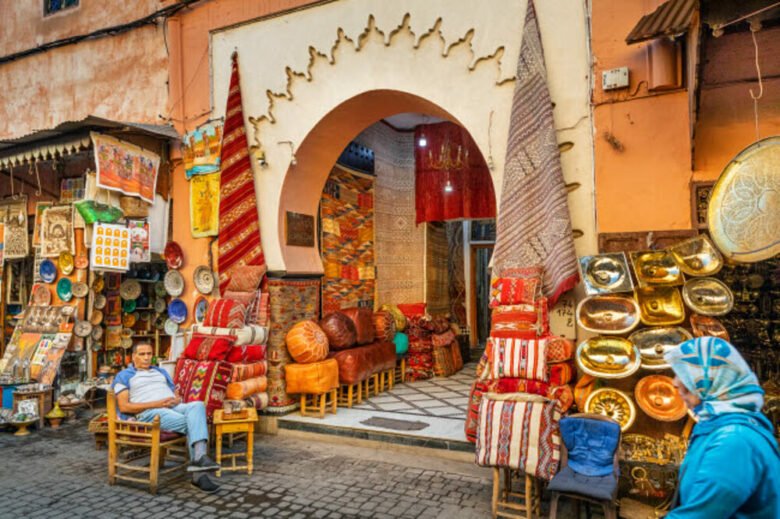At the heart of Morocco’s rich culture and traditions lies a jewel of well-being and relaxation handed down from generation to generation. The Moroccan Hammam, along with its traditional treatments, bears witness to the country’s deep understanding of natural well-being and holistic health practices. In this comprehensive guide, we invite you to explore the unique world of Moroccan wellness, delving into the benefits of Hammams and traditional Moroccan treatments that promise to invigorate not only your body but also enrich your soul.
The essence of the Moroccan Hammam
More than just a steam bath, the Moroccan Hammam is an integral part of the Moroccan culture and way of life. It’s a place where physical purification meets social conviviality, and where relaxation blends with tradition. Hammams serve as community gathering places, offering a space to relax and meet, strengthening social bonds while promoting health and purity.
Historical roots of the Hammam
Hammams, heirs to Roman baths, have evolved with cultures down the ages. In Morocco, they have evolved into a popular weekly ritual, becoming a place of social gathering and relaxation for many locals. This age-old tradition plays a vital role in the social fabric, fostering cohesion within communities through a ritual that combines purification and relaxation. In addition to their hygienic function, Hammams are a convivial space where bonds and exchanges are forged, helping to strengthen the social and cultural ties that have endured over time.
The Hammam experience: a journey of revitalization
Visiting a Hammam is like embarking on a journey through different stages of heat, water and relaxation. From the warm room to the hot room, through exfoliation and ending with the resting room, the Hammam experience is designed to cleanse body and mind. This traditional process promotes deep relaxation, purification and regeneration, offering an escape from the stresses of everyday life.
Traditional Moroccan treatments
In a typical Hammam, the atmosphere is imbued with ancestral Moroccan traditions. Practitioners use natural ingredients such as rhassoul (volcanic clay) and argan oil, renowned for their therapeutic benefits for generations. These traditional treatments not only nourish and moisturize the skin, but are also renowned for their purifying and soothing properties. The Hammam experience is much more than a simple beauty treatment; it offers a deep dive into Moroccan culture and rituals of well-being, handed down from generation to generation.
The magic of black soap and Rhassoul clay
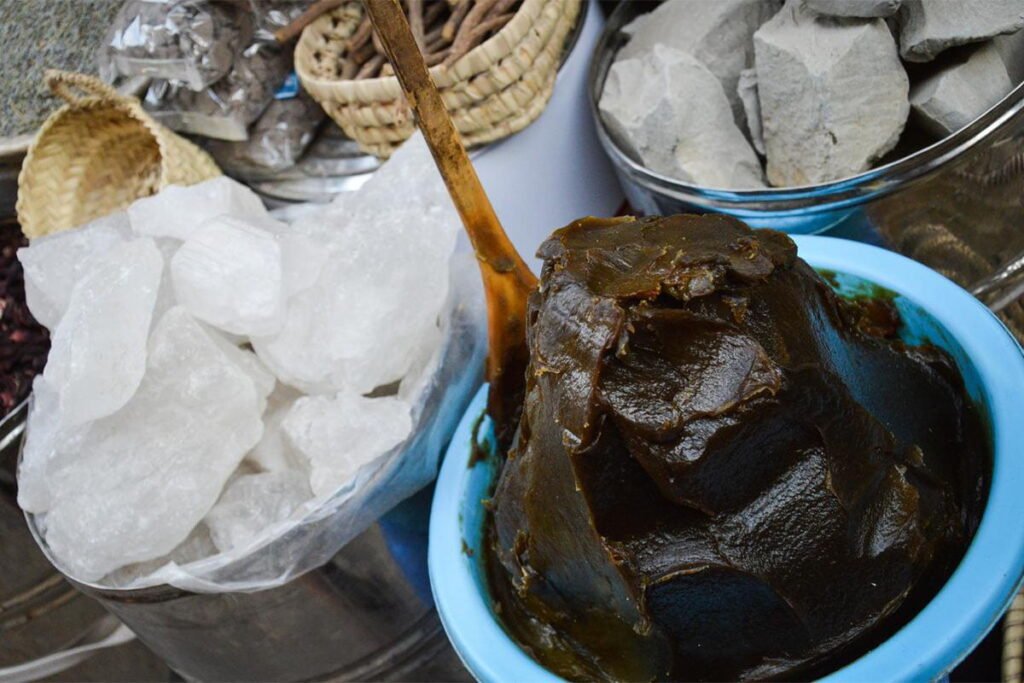
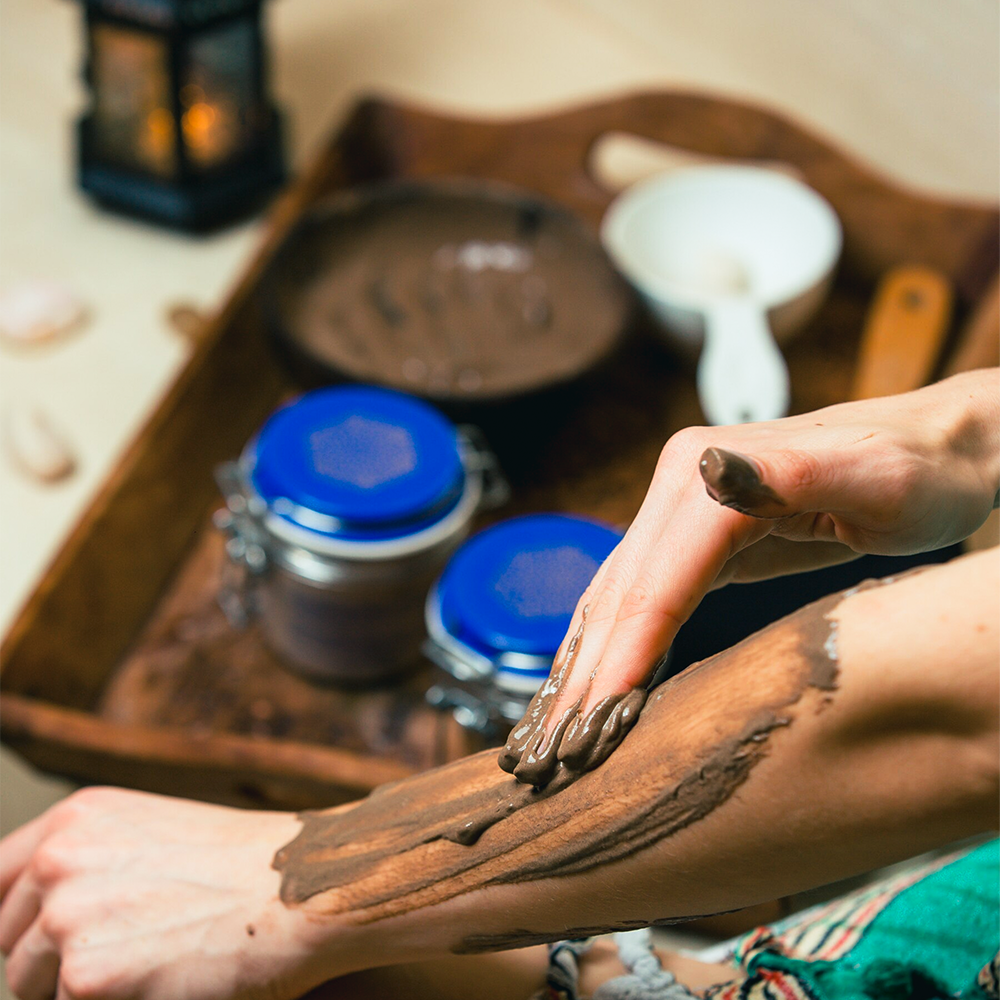
Black soap, a blend of olive oil and eucalyptus, stands out for its deep purifying virtues. Rhassoul clay, extracted from the peaks of the Atlas Mountains, is renowned for its detoxifying and skin-softening properties. These natural ingredients, at the heart of Moroccan beauty rituals, testify to a commitment to environmentally-friendly, high-performance skin care. The combination of these two elements deeply cleanses the skin while preserving its natural balance, offering an authentic and beneficial beauty experience.
The exfoliation ritual
Using a Kessa glove to exfoliate the body, removing dead skin cells and stimulating circulation, revitalizes not only the skin but also the body’s energy. This exfoliation ritual, essential for maintaining healthy, radiant skin, is a key step in the Hammam experience, promoting regeneration and well-being.
The role of Argan oil in Moroccan wellness
Argan oil, often referred to as liquid gold, is a cornerstone of Moroccan beauty rituals. Its versatility and nourishing properties make it an essential component of post-Hammam treatments, promoting healthy skin and hair. This natural treasure, rich in vitamins and antioxidants, symbolizes the harmony between Moroccan traditions of well-being and nature.
The benefits of Moroccan Hammam and traditional treatments
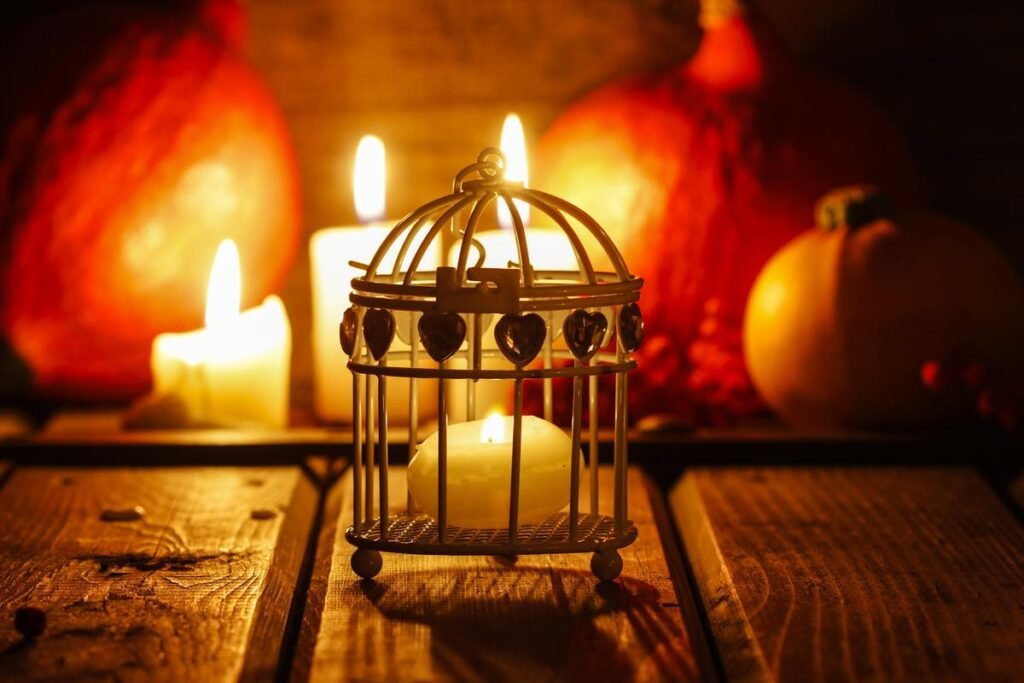
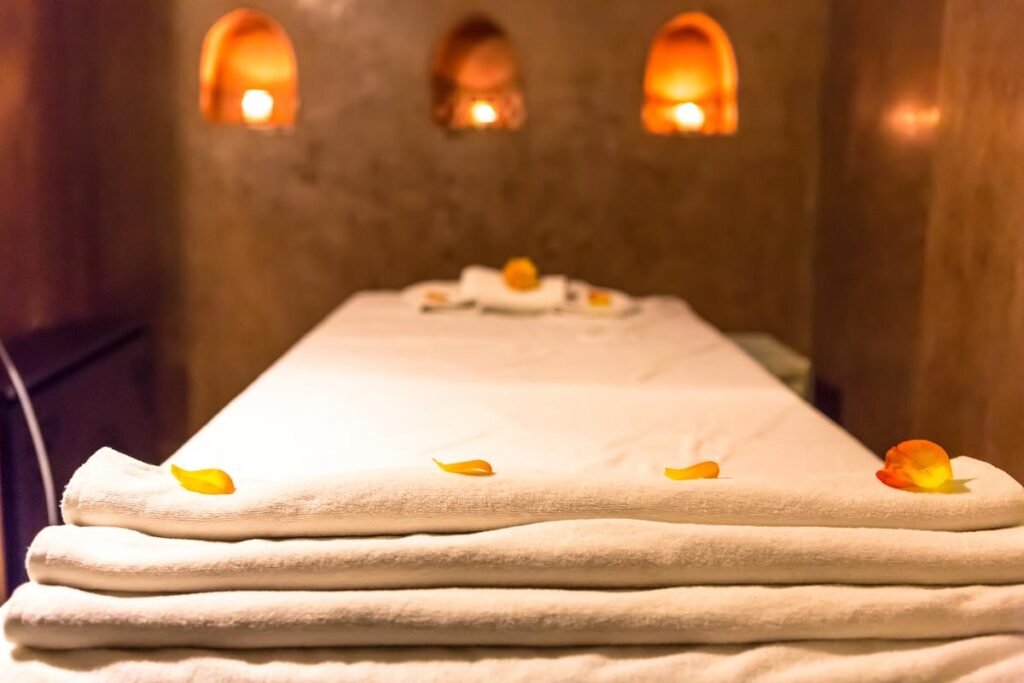
The Hammam experience, a veritable jewel of Moroccan tradition, transcends simple relaxation to offer a deep immersion in health benefits. This age-old ritual, combined with traditional treatments, reveals a myriad of benefits. It not only improves skin health through deep purification and long-lasting hydration, but also detoxifies the entire body. What’s more, this privileged moment of relaxation reduces stress and improves overall physical and mental well-being, creating an incomparable holistic experience.
Detoxifying and improving skin health
Hammam vapors and traditional treatments help open pores, cleanse the skin and eliminate toxins, leading to clearer, softer skin. This deep purification is essential for maintaining skin radiance and health, reflecting the principles of natural well-being at the heart of Moroccan practices.
Stress reduction and relaxation
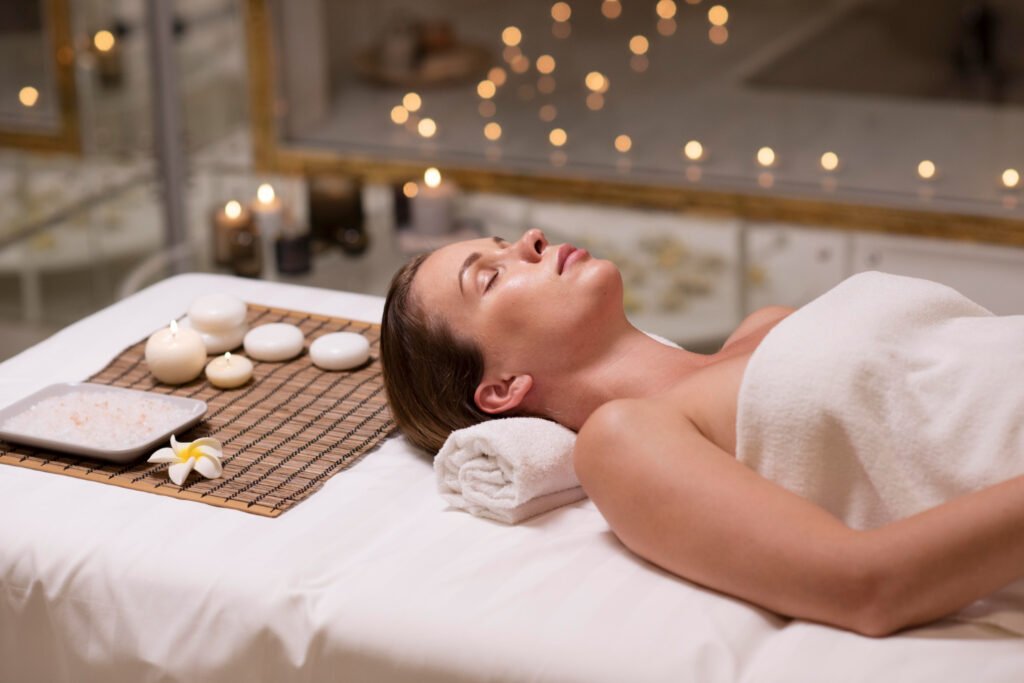
The Hammam, with its enveloping warmth and age-old rituals, creates a cocoon of relaxation conducive to soothing the body and mind. The heat dilates the pores, releasing toxins and soothing muscular tension, while the scrubbing and moisturizing rituals revitalize the skin. This timeless interlude offers a genuine escape from the hustle and bustle of daily life, allowing you to refocus on yourself and cultivate a sense of inner calm. It’s an essential practice for preserving emotional and mental balance in our often hectic society, reminding us of the vital importance of allowing ourselves moments of gentleness and well-being.
Improving circulation and the immune system
The process of moving between different temperatures in the Hammam improves circulation, which can boost the immune system and improve overall health. This stimulation of circulation benefits both body and mind, contributing to a feeling of renewed vitality and energy.
Adopting the Moroccan way of well-being
To fully embrace Moroccan well-being, it’s important to integrate these practices into your routine. Whether it’s regular visits to the Hammam, incorporating argan oil into your beauty regime, or adopting the Moroccan philosophy of taking time for yourself, there’s much to be gained from this ancient wisdom.
Where to experience authentic Moroccan Hammam and traditional treatments
Morocco is home to many traditional Hammams and luxury spas offering authentic Hammam experiences and treatments. From the historic Hammams of Marrakech and Fez to the modern, luxurious spas of Casablanca, there’s no shortage of options for those looking to immerse themselves in Moroccan well-being.
Conclusion
Moroccan Hammam and traditional treatments are more than just a wellness practice; they reflect a culture that values harmony between body, mind and soul. Embracing these practices offers a path to a more balanced, healthy and enriched life. By exploring the benefits of Hammam and traditional Moroccan treatments, we not only improve our physical well-being but also connect with a rich cultural heritage that has much to teach us about living a life of well-being and relaxation. So, embark on this journey of discovery and let the Moroccan way of well-being transform your approach to health and well-being.
FAQs
- What is a Hammam? A Hammam is a traditional Moroccan steam bath that plays a central role in Morocco’s wellness culture, offering purification and relaxation.
- How does a visit to the Hammam work? A typical visit to the Hammam comprises several stages: relaxation in a warm room, steam bath in a hot room, exfoliating scrub with black soap, rinsing, then rest.
- What are the main benefits of the Hammam? Benefits include skin purification, body detoxification, stress reduction, improved circulation and a general sense of well-being.
- What is black soap? Black soap is a natural cleansing product made from black olives and oil, used in the Hammam for its exfoliating and moisturizing properties.
- Why is Rhassoul clay special ? Rhassoul clay, from the Atlas Mountains, is rich in minerals and used for its cleansing, detoxifying and skin-softening properties.
